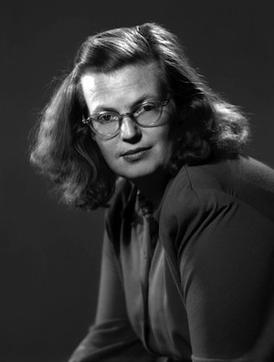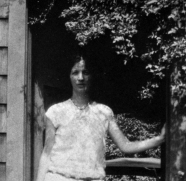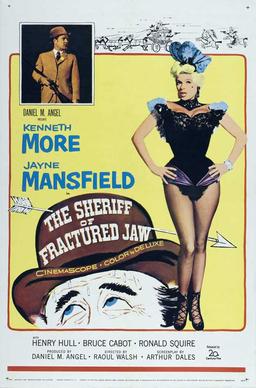Related Research Articles

Norma Rae is a 1979 American drama film directed by Martin Ritt from a screenplay written by Irving Ravetch and Harriet Frank Jr. The film is based on the true story of Crystal Lee Sutton – which was told in the 1975 book Crystal Lee, a Woman of Inheritance by reporter Henry P. Leifermann of The New York Times – and stars Sally Field in the titular role. Beau Bridges, Ron Leibman, Pat Hingle, Barbara Baxley, and Gail Strickland are featured in supporting roles. The film follows Norma Rae Webster, a factory worker with little formal education in North Carolina who becomes involved in trade union activities at the textile factory where she works after her and her co-workers' health is compromised due to poor working conditions.
Thrones, Dominations is a Lord Peter Wimsey–Harriet Vane murder mystery novel that Dorothy L. Sayers began writing but abandoned, and which remained at her death as fragments and notes. It was completed by Jill Paton Walsh and published in 1998. The title is a quotation from John Milton's Paradise Lost and refers to two categories of angel in the Christian angelic hierarchy.

Shirley Hardie Jackson was an American writer known primarily for her works of horror and mystery. Over the duration of her writing career, which spanned over two decades, she composed six novels, two memoirs, and more than 200 short stories.

Pearl Sydenstricker Buck was an American writer and novelist. She is best known for The Good Earth a bestselling novel in the United States in 1931 and 1932 and won the Pulitzer Prize in 1932. In 1938, Buck won the Nobel Prize in Literature "for her rich and truly epic descriptions of peasant life in China" and for her "masterpieces", two memoir-biographies of her missionary parents. She was the first American woman to win that prize.

Ida Lupino was a British actress, director, writer, and producer. Throughout her 48-year career, she appeared in 59 films and directed eight, working primarily in the United States, where she became a citizen in 1948.

Kay Boyle was an American novelist, short story writer, educator, and political activist. She was a Guggenheim Fellow and O. Henry Award winner.

Virginia Mayo was an American actress and dancer. She was in a series of comedy films with Danny Kaye and was Warner Brothers' biggest box-office money-maker in the late 1940s. She also co-starred in the 1946 Oscar-winning movie The Best Years of Our Lives and White Heat (1949).

Louise Bogan was an American poet. She was appointed the fourth Poet Laureate to the Library of Congress in 1945, and was the first woman to hold this title. Throughout her life she wrote poetry, fiction, and criticism, and became the regular poetry reviewer for The New Yorker.

Gillian Honorine Mary Herbert, Baroness Hemingford,, known professionally as Jill Paton Walsh, was an English novelist and children's writer. She may be known best for her Booker Prize-nominated novel Knowledge of Angels and for the Peter Wimsey–Harriet Vane mysteries that continued the work of Dorothy L. Sayers.

The Sheriff of Fractured Jaw is a 1958 British-American Western comedy directed by Raoul Walsh, starring Kenneth More and Jayne Mansfield. Mansfield's singing voice is dubbed by Connie Francis. It was one of the first Westerns to be shot in Spain.

Anni Albers was a German textile artist and printmaker credited with blurring the lines between traditional craft and art.
Besides surface qualities, such as rough and smooth, dull and shiny, hard and soft, textiles also includes colour, and, as the dominating element, texture, which is the result of the construction of weaves. Like any craft it may end in producing useful objects, or it may rise to the level of art.

Joan Mondale was the second lady of the United States from 1977 until 1981 as the wife of Walter Mondale, the 42nd vice president of the United States. She was an artist and author and served on the boards of several organizations. For her promotion of the arts, she was affectionately dubbed Joan of Art.

Ray-Bernice Alexandra Kaiser Eames was an American artist and designer who worked in a variety of media.

Désirée Lucienne Lisbeth Dulcie Day OBE RDI FCSD was one of the most influential British textile designers of the 1950s and 1960s. Day drew on inspiration from other arts to develop a new style of abstract pattern-making in post-war British textiles, known as ‘Contemporary’ design. She was also active in other fields, such as wallpapers, ceramics and carpets.
Mary Doreen Cooper-Wright was an English swimmer who competed in the 1930 British Empire Games, where she won a gold medal alongside Olive Joynes, Phyllis Harding, and her younger sister Joyce in the 4x100 yard freestyle relay. Outside of sports she worked as a textile designer and was involved in local politics in Buckinghamshire. Recorded in the form of a diary, her letters to her husband, who went missing while serving in World War II, were published in 2012.
Sally Walsh was an American interior designer best known for her work in the Houston area in the "contemporary" style of the period. She is credited for "convincing Houston’s corporations and institutions to embrace modernity through the sheer force of her personality and the power of her design". She was inducted into the Interior Design Hall of Fame in 1986. Walsh was Partner in Charge at S. I. Morris Associates from 1971 to 1978.
Ruth Adler Schnee was a German-born American textile designer and interior designer based in Michigan. Schnee was best known for her modern prints and abstract-patterns of organic and geometric forms. She opened the Ruth Adler-Schnee Design Studio with her spouse Edward Schnee in Detroit, which operated until 1960. The studio produced textiles and later branched off into Adler-Schnee Associates home decor, interiors, and furniture.
Elizabeth "Lillie" Buffum Chace Wyman was an American social reformer and an author best known for her short stories and essays about problems like the mistreatment of factory workers. She also wrote poems and an interpretation of Shakespeare's Hamlet from Queen Gertrude's point of view.

Joan Maureen Walsh is a liberal American political pundit and journalist. Walsh is national affairs correspondent for The Nation, and was previously an on-air political analyst at CNN and MSNBC. She produced the 2020 documentary "The Sit In: Harry Belafonte Hosts The Tonight Show." She is a former editor-in-chief of Salon and author of the book What's the Matter with White People?
Grace Christie (1872–1953) was an English embroiderer, teacher and historian of embroidery who published a comprehensive work on opus anglicanum in 1938, documenting every known example. "She is regarded as one of the most influential people in the early twentieth century with respect to the development of embroidery and embroidery studies in Britain and elsewhere."
References
- 1 2 Peter Scott (2007), Triumph of the south : a regional economic history of early twentieth century Britain, Ashgate Pub. Co, p. 206, ISBN 9781840146134, OCLC 64230076
- 1 2 Bettie Marks (May 1953), "Women's Work", The Labour Monthly: 239